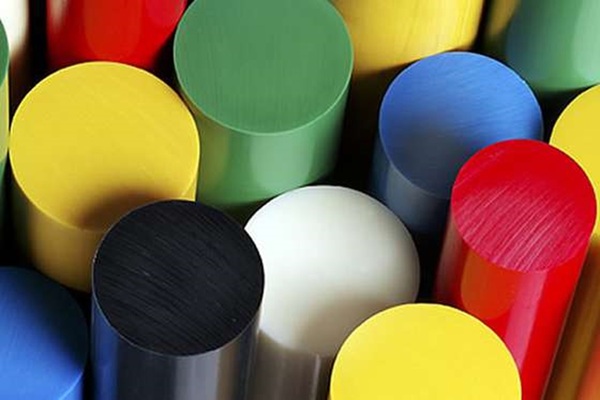Notifications
ALL BUSINESS
COMIDA
DIRECTORIES
ENTERTAINMENT
FINER THINGS
HEALTH
MARKETPLACE
MEMBER's ONLY
MONEY MATTER$
MOTIVATIONAL
NEWS & WEATHER
TECHNOLOGIA
TV NETWORKS
VIDEOS
VOTE USA 2026/2028
INVESTOR RELATIONS
COMING 2026 / 2027
ALL BUSINESS
COMIDA
DIRECTORIES
ENTERTAINMENT
FINER THINGS
HEALTH
MARKETPLACE
MEMBER's ONLY
MONEY MATTER$
MOTIVATIONAL
NEWS & WEATHER
TECHNOLOGIA
TV NETWORKS
VIDEOS
VOTE USA 2026/2028
INVESTOR RELATIONS
COMING 2026 / 2027
About Me
 Naik Krish
Naik Krish Petron Thermoplast: Your trusted supplier for PVDF, PVC, and industrial plastic materials, including engineering plastics. We provide high-quality materials for various industrial applications, ensuring durability and performance. Our extensive range caters to diverse needs, from chemical processing to construction. Rely on Petron Thermoplast for reliable, top-grade plastic solutions.
 Naik Krish -
July 5, 2024 -
Other -
engineering plastic
Industry Plastic Material
Industry Material
plastic
-
343 views -
0 Comments -
0 Likes -
0 Reviews
Naik Krish -
July 5, 2024 -
Other -
engineering plastic
Industry Plastic Material
Industry Material
plastic
-
343 views -
0 Comments -
0 Likes -
0 Reviews

Engineering Plastics are a subset of thermoplastics known for their superior mechanical and thermal properties. Unlike commodity plastics used for everyday items, engineering plastics are designed for high-performance applications that require enhanced durability, strength, and resistance to environmental factors. They are used in applications where standard plastics would fail to meet the required performance standards.
Plastic is a synthetic material made from polymers, which are large molecules composed of repeating structural units. These polymers can be molded into various shapes and forms, making plastic a highly versatile material. Plastics are categorized into two main types: thermoplastics and thermosetting plastics. Thermoplastics can be melted and reshaped multiple times, while thermosetting plastics harden permanently after being molded.
Engineering plastics are integral to numerous industries due to their robustness and reliability. Some key industries include:
Automotive: Engineering plastics are used in the automotive industry for parts like fuel systems, engine components, interior trims, and exterior body parts. They offer benefits such as weight reduction, which improves fuel efficiency and reduces emissions.
Electronics: In the electronics industry, engineering plastics are used for insulating components, connectors, circuit boards, and casings. Their electrical insulating properties and resistance to heat make them ideal for electronic applications.
Aerospace: The aerospace industry uses engineering plastics for components such as interior panels, seats, and structural parts. These plastics help reduce the weight of aircraft, leading to better fuel efficiency and performance.
Medical Devices: Engineering plastics are used in medical devices and equipment due to their biocompatibility, sterilizability, and resistance to chemicals. Applications include surgical instruments, diagnostic equipment, and prosthetic devices.
Construction: In the construction industry, engineering plastics are used for piping systems, insulation materials, and structural components. Their durability and resistance to environmental factors make them suitable for long-term use in building projects.
Industrial Machinery: Engineering plastics are used in machinery for gears, bearings, and other mechanical components. They offer excellent wear resistance and can operate under high loads and temperatures.
Engineering plastics are made from various polymers, each offering specific properties tailored to different applications. Some common types of engineering plastics include:
Polycarbonate (PC): Known for its high impact resistance and transparency, polycarbonate is used in applications like safety goggles, automotive lighting, and electronic casings.
Polyamide (Nylon): Nylon offers excellent mechanical properties, including high strength and wear resistance. It is used for gears, bearings, and other mechanical parts.
Polyoxymethylene (POM): Also known as acetal, POM is known for its high stiffness, low friction, and excellent dimensional stability. It is used in precision parts like gears and valves.
Polyetheretherketone (PEEK): PEEK is a high-performance plastic with exceptional thermal stability, chemical resistance, and mechanical properties. It is used in demanding applications such as aerospace, medical implants, and industrial machinery.
Polytetrafluoroethylene (PTFE): Commonly known as Teflon, PTFE is known for its non-stick properties, high-temperature resistance, and chemical inertness. It is used in applications like non-stick coatings, gaskets, and seals.
Acrylonitrile Butadiene Styrene (ABS): ABS combines strength, toughness, and ease of processing. It is used in automotive parts, consumer electronics, and toys.
Processing Methods: Engineering plastics can be processed using various techniques, including injection molding, extrusion, blow molding, and thermoforming. The choice of processing method depends on the specific application and desired properties of the final product.
Advantages: Engineering plastics offer several advantages over traditional materials like metals and ceramics. These advantages include lighter weight, corrosion resistance, easier fabrication, and cost-effectiveness. They can also be designed to meet specific performance requirements, making them highly versatile.
Recycling and Sustainability: With growing environmental concerns, the recycling of engineering plastics has become increasingly important. Many engineering plastics can be recycled, and efforts are being made to develop sustainable materials and processes. Biodegradable engineering plastics and bio-based polymers are also being researched to reduce the environmental impact.
Future Trends: The demand for engineering plastics is expected to grow due to advancements in technology and the increasing need for high-performance materials. Innovations in material science are likely to lead to the development of new engineering plastics with enhanced properties, opening up new applications and markets.
Engineering plastics play a crucial role in modern industry, providing high-performance solutions for demanding applications. With their superior mechanical, thermal, and chemical properties, they are indispensable in industries ranging from automotive to medical devices. As technology advances and the need for sustainable materials grows, engineering plastics will continue to evolve, offering even greater performance and versatility.
Q1: What are engineering plastics?
A: Engineering plastics are high-performance thermoplastics known for their superior mechanical and thermal properties. They are used in demanding applications where standard plastics would not suffice.
Q2: What are some common types of engineering plastics?
A: Common types include polycarbonate (PC), polyamide (Nylon), polyoxymethylene (POM), polyetheretherketone (PEEK), polytetrafluoroethylene (PTFE), and acrylonitrile butadiene styrene (ABS).
Q3: What industries use engineering plastics?
A: Industries that use engineering plastics include automotive, electronics, aerospace, medical devices, construction, and industrial machinery.
Q4: What are the advantages of engineering plastics over traditional materials?
A: Advantages include lighter weight, corrosion resistance, easier fabrication, cost-effectiveness, and the ability to meet specific performance requirements.
Q5: Are engineering plastics recyclable?
A: Yes, many engineering plastics are recyclable, and efforts are being made to develop sustainable materials and recycling processes to reduce environmental impact.
